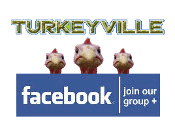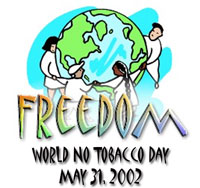
R.J. Reynolds (RJR) makes and sells cigarettes and ...
Nicotine in cigarettes is more addictive than heroin or cocaine, and ...
RJR skillfully marketss to 14 year-olds, and ...
60% of all smokers start smoking by age 14, and ...
90% of all smokers become addicted by age 19, and ...
Many becoming chemically dependent after only a few cigarettes, and ...
s eventually kill 50% of all addicted teens, and ...
20% of all NASCAR fans are addicted to s, and ...
11 million children ages 12-17 watch each NASCAR race, and ...
Tobacco is scheduled to kill 450,000 Americans during 2002, and ...
RJR sells over 22% all U.S. cigarettes, ...
Thus being responsible for killing almost 100,000 Americans a year, ...
Five times more than killed by all illegal drugs combined, or ...
Every year killing more than have ever attended a race at Martinsville, and ...
NASCAR is 's most visible teen marketing tool, and ...
NASCAR knows it is RJR's partner in addicting then killing teen racing fans ...
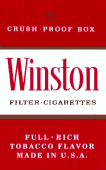
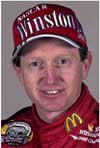

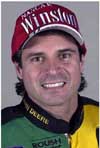
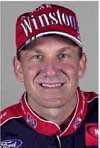

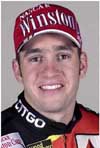
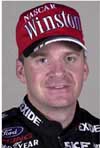

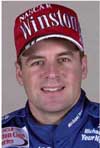


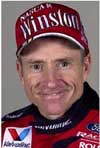


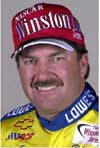
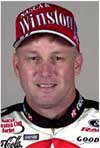

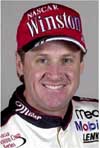
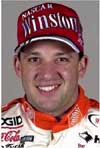


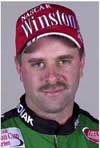


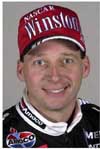



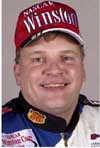
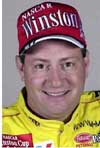


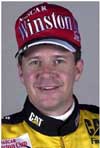

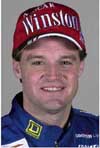
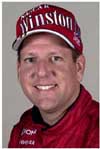

April 14, 1972 - "If, as proposed, nicotine is the sine qua non of smoking, and if we meekly accept the allegations of our critics and move toward reduction or elimination of nicotine in our products, then we shall eventually liquidate our business. If we intend to remain in business and our business is the manufacture and sale of dosage forms of nicotine, then at some point we must make a stand." R.J.R., by Claude Teague, RJR Executive, Research Planning Memorandum on The Nature of the Tobacco Business and the Crucial Role of Nicotine Therein, 1972, 14 April
September, 1989 - Wayne Robertson, RJR: "We're in the cigarette business. We're not in the sports business. We use sports as an avenue for advertising our products ... We can go into an area where we're marketing an event, measure sales during the event and measure sales after the event, and see an increase in sales." J. DeParle, Warning: Sports Stars May be Hazardous to Your Health, The Washington Monthly, 1989, September, p34-49.
June 2, 1992 - An actor promoting RJ Reynolds products asks an RJR executive why he does not smoke. He is told: "We don't smoke that s***. We just sell it. We just reserve the right to smoke for the young, the poor, the black and the stupid." Thames TV, First Tuesday, Tobacco Wars, 1992, 2 June.
August 2, 1992 - Dave Goerlitz, lead model for RJ Reynolds for seven years, says his marketing brief was to "attract young smokers to replace the older ones who were dying or quitting." "I was part of a scam, selling an image to young boys. My job was to get half a million kids to smoke by 1995" J. di Giovanni, Cancer Country - Who's Lucky Now?, The Sunday Times, 1992, 2 August, p12. Many people believe that smoking is addictive, and as that term is commonly used today, it is.
"Many people believe that smoking is addictive, and as that term is commonly used today, it is."
R.J. Reynolds Official Web Site
"Our paramount objective in 1975 and ensuing years is to reestablish RJR's share of market growth in the domestic cigarette industry." ... "First, let's look at the importance of the young adult in the cigarette market. In 1960, this young adult market , the 14 to 24 age group, represented 21% of the population. As seen by this chart, they will represent 27% of the population in 1975, they represent tomorrow's cigarette business, as this 14 -24 age group matures, they will account for a key share of the total cigarette volume - for at least the next 25 years."
"Both Philip Morris and Brown & Williamson, and particularly their fast growing major brands, Marlboro and Kool, have shown unusual strength among these younger smokers. In the 14 to 24 age category Philip Morris has a 38% share and B&W a 21% share." ... "Our two major brands, Winston and Salem, show comparative weakness against Marlboro and Kool among these younger smokers. Winston is at 14% in the 14 -24 age group versus Marlboro at 33%." ... "This suggests slow market share erosion for us in the years to come unless the situation is corrected."
"Thus, our strategy becomes clear for our established brands: (1) direct advertising appeal to the younger smokers while (2) being true to the brand's basic product attributes (e.g., taste for Winston, refreshment for Salem) and (3) without alienating the brand's current franchise."
For Winston we've followed this strategy in developing the new "candid" advertising campaign which broke September 16. It is especially designed to appeal to young adults with:
... "Each of our major special events is directed against young adults. NASCAR, with Winston, reaches 8 million spectators with 63% of these under 35 years of age. Our participation takes 2 forms: (1) the Winston Cup/Winston West series with 55 races primarily in the southeast and California, (2) the modified sportsman with 60 races in the northeast and mid-west. Thus, NASCAR gives Winston national coverage. " ... "For Camel filter, we have developed a new strategy. While Camel cannot match the media dollars spent by Marlboro, the brand will have pinpointed efforts against young adults through its sponsorship of sports car racing and motorcycling. Sports car racing reaches 300,000 spectators -- 85% under 35 years of age -- and is primarily on the east amd west coasts."
"Motorcycling, a new special event successfully tested in 1974, will-have 26 races reaching 400,000 spectators with an estimated 90% under 35 years of age. This event will be in the major population centers such as Chicago, Los Angeles, San Francisco, and Houston. Since special events are a relatively new and different type of activity for us, I would like to review the nature and extent of our promotional activities in them."
"First, we have heavy involvement at the event site, permanent billboard advertising, and brand exclusivity at concession stands. We sell our branded, event-related items, such as Winston hats, shirts, and jackets. We have tie-in banners and posters with strong brand identification and brand commercials over the public address systems. We have strong press outreach through wire services local press and special interest publications. For example, at the Winston Western 500, the race with heavy mention of Winston was in newspapers having a circulation of 10 million and on a 2-hour radio program reaching 30 million people. Our sales force works retail store tie-ins to the event with product displays and posters."
"Our Winston #1 and Camel filter GT cars are displayed in shopping centers in major markets. The Winston #1 car has received outstanding acceptance recently on the streets of New York. Lastly, we use newspaper and program advertising for image association between the brand and the sport. You might logically ask "what does all of this mean in terms of sales?" Our research indicates that among racing fans Winston's share of smokers is 67% greater than among non-racing fans."
"Other programs have been developed to reach young adults where they work, play and where they purchase their cigarettes. Free-on-package trial inducement promotions are being used in high traffic, young adult package outlets such as convenience stores. Seven million trial units will be sold in 1975. We will have permanent counter displays in 35,000 outlets catering to young adult package purchases."
"There is universal awareness of the conclusions of the Surgeon General, and public health and medical officials that smoking causes serious diseases, including lung cancer and heart disease. Individuals should rely on these conclusions when making any decision regarding smoking. Epidemiological studies (population studies comparing the incidence of disease between groups of smokers and groups of nonsmokers) have led the U.S. Surgeon General to conclude:
Imagine the NFL, NBA, PGA, NHL or Major League Baseball selling their name to a drug pusher and then allowing the pusher to push a drug upon all fans that is almost five times more addictive to the human population than powdered cocaine(15% vs. 70%). What is wrong with NASCAR being NASCAR and all other divisions being who they are? If NASCAR really thinks it needs a separate name for its top series then why not allow the fans to suggest and then vote on a series name? Why not name it after NASCAR's founder and call it the BF Series? NASCAR can sell annual sponsorship and receive the exact same funding provided by RJR without selling its name! I can hear it now "NASCAR, sponsored in 2003 by Wheaties, Breakfast of Champions!"
When it comes to naming "The Cup," why not involve the fans? Imagine drivers racing for the Earnhardt Cup, the Petty Cup, the Earnhardt - Petty Cup, or even "The France Cup." Why have them racing for a product that this year will kill 150 times as many Americans as the terrorists did on September 11, 2001. Isn't it time for NASCAR to grow up and act responsibly? I sure hope so!
I, John R. Polito, am the sole creator of this page and I accept full and exclusive responsibility for its message and content. As a NASCAR fan myself, it's my prayer that this page will help motivate NASCAR drivers to someday soon flex their collective muscle and demand new NASCAR sponsorship that is not in the business of addicting teen racing fans and then slowly killing them!
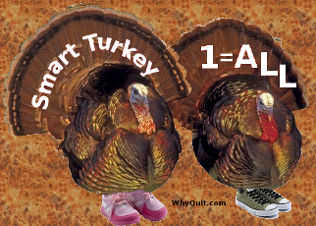
 WhyQuit.com - WhyQuit is the Internet's oldest forum devoted to the art, science and psychology of cold turkey quitting, the stop smoking method generating more successful quitters than all others combined. Left to right, WhyQuit is organized under three headings: (1) Motivation, (2) Education and (3) Support.
WhyQuit.com - WhyQuit is the Internet's oldest forum devoted to the art, science and psychology of cold turkey quitting, the stop smoking method generating more successful quitters than all others combined. Left to right, WhyQuit is organized under three headings: (1) Motivation, (2) Education and (3) Support.
